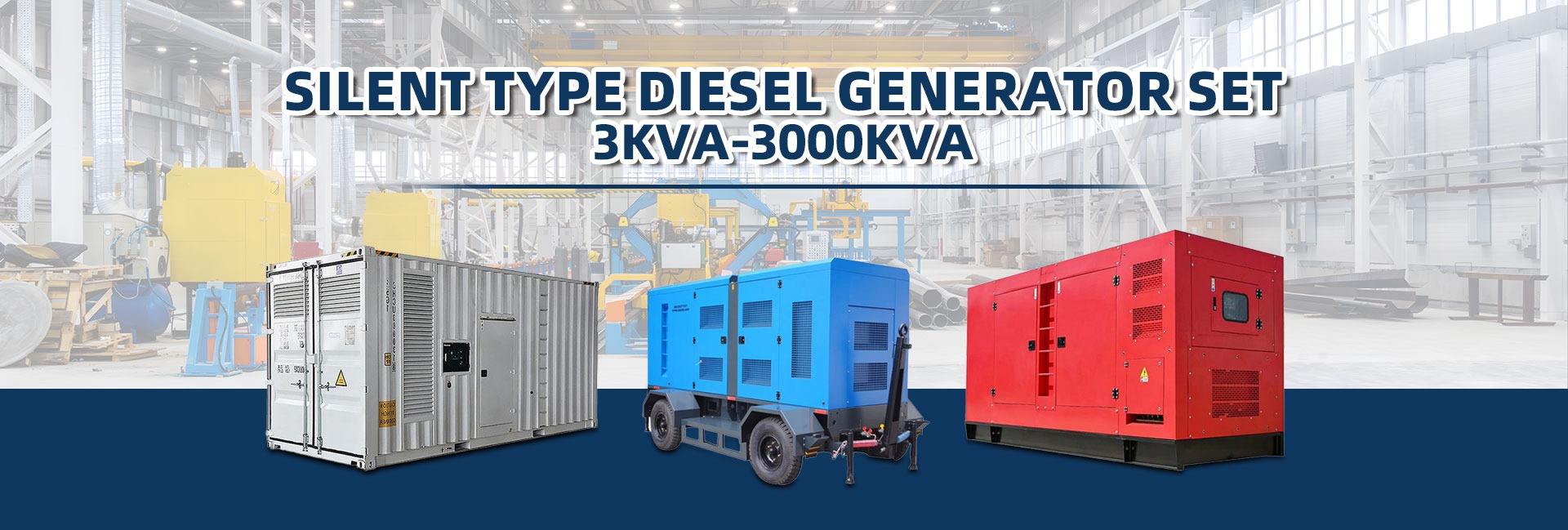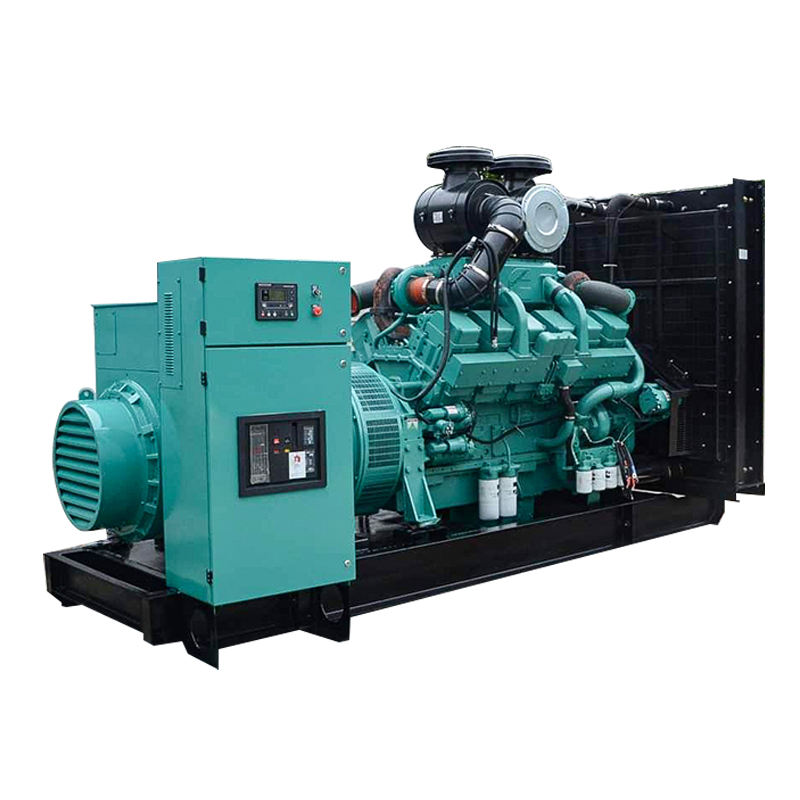In the realm of consistent power supply, the phrase "reliable operations" isn't just a goal; it's an absolute necessity. Whether we're talking about hospitals, data centers, remote construction sites, or even critical infrastructure during an outage, uninterrupted power is paramount. At the heart of many power generation systems lie generator sets, and within these robust machines, certain components bear immense responsibility for enduring performance. Among the most critical is the crankshaft, the very backbone of the engine that converts linear piston motion into rotational energy. Its ability to withstand immense mechanical stresses and continuous operation is directly tied to the generator set's overall reliability. Frankly speaking, without a durable crankshaft, achieving truly reliable operations from a generator set is simply not possible in the long run.
Think about the sheer forces at play inside an engine. The crankshaft endures cyclical loading from piston combustion, torsional vibrations, bending moments, and significant frictional forces at its bearings, all while rotating at high speeds for hours, days, or even weeks on end. This isn't a part that can afford to be anything less than exceptionally strong and precisely engineered. The material science behind its creation, the manufacturing processes used for forging or casting, and the subsequent heat treatments and machining must be of the highest standard. A crankshaft's premature failure doesn't just mean a simple part replacement; it usually results in catastrophic engine damage, leading to extensive downtime and costly repairs. It's this fundamental component durability that forms a vital layer of assurance for generator sets intended for reliable operations.
The Foundation of Reliability: Why Durable Crankshafts Matter in Generator Sets
The crankshaft acts as the main artery of the generator engine. Its design dictates the engine's stroke, cylinder arrangement, and ultimately, its power output characteristics. However, its most critical attribute, especially when it comes to generator sets used for continuous or backup power, is its durability. Why is durability so crucial? Because generator sets are often deployed in demanding environments, subjected to varying loads, and expected to perform reliably under pressure, often without constant supervision. A crankshaft that is poorly manufactured, made from inferior materials, or improperly balanced will quickly succumb to the relentless stresses of operation. This leads to accelerated wear, increased vibration, potential cracking, and ultimately, failure. I've found that investing in a generator set with a demonstrably durable crankshaft is one of the most significant decisions an operator can make to safeguard against unexpected breakdowns and ensure consistent, reliable operations.
Consider the lifecycle costs. A cheaper generator set might seem appealing initially, but if it houses an engine with a less robust crankshaft, the potential for early failure looms large. The cost of repairing or replacing a severely damaged engine, not to mention the indirect costs of downtime and loss of productivity, can far outweigh the initial savings. Many experts agree that focusing on the quality of core engine components, like the crankshaft, is foundational to building a truly reliable generator set. This involves meticulous selection of high-strength alloy steels, precision forging or casting techniques, followed by surface hardening processes like nitriding or induction hardening to improve wear resistance and fatigue strength. Even the slightest imperfection in manufacturing can become a stress concentration point, leading to failure under cyclical loading. This level of engineering and quality control is what separates a merely functional crankshaft from one capable of supporting reliable operations for thousands of hours.
Beyond the Crankshaft: Engineering Generator Sets for Enduring Reliable Operations
While the crankshaft is undeniably vital, achieving reliable operations requires a holistic approach to generator set design and manufacturing. It's not just about one strong component, but how all parts work together seamlessly under stress. The engine itself needs robust pistons, connecting rods, bearings, cylinder heads, and a reliable fuel injection system, all designed to complement the crankshaft's strength. However, the generator set comprises more than just the engine. The alternator must be capable of consistently producing stable voltage and frequency, often with advanced excitation systems to handle varying loads without significant voltage dips. The cooling system – whether air or liquid-cooled – needs to be oversized or highly efficient to prevent overheating, a major cause of component stress and failure. Frankly speaking, even the most durable crankshaft is useless if the generator set's cooling system fails and the engine seizes up.
The control system is another critical element for reliable operations. Modern generator sets feature sophisticated controllers that monitor engine parameters (like oil pressure, temperature, speed), alternator output, and manage protective shutdowns. These systems need to be reliable themselves, accurately interpreting data and responding swiftly to prevent damage or optimize performance. The structural integrity of the genset frame, the vibration isolation mounts, and the enclosure (if applicable) also contribute to longevity by minimizing stresses on components during operation and transport. Interestingly enough, even the fuel tank and supply lines must be considered – blockages or leaks can halt operations just as effectively as a mechanical failure. A truly reliable generator set is an integrated system where each part is designed not just to function, but to endure and work in harmony to deliver consistent power, reflecting a comprehensive engineering philosophy aimed at ensuring reliable operations under diverse conditions.
The Interconnectedness: How Component Quality Ensures Generator Set Reliability
The reliability of a generator set is, in essence, the sum of the reliabilities of its individual components and the effectiveness of their integration. A durable crankshaft is a critical starting point, but its performance is intrinsically linked to the quality of the main and connecting rod bearings it rides on. If the bearings are substandard or lubrication is inadequate, even the strongest crankshaft will eventually fail due prematurely wear or scoring. Similarly, the connecting rods must be precisely manufactured and capable of handling the forces transmitted from the pistons to the crankshaft. A weak connecting rod can bend or break, leading to catastrophic damage involving the crankshaft.
Furthermore, the quality of the fasteners – the bolts and nuts holding everything together – plays a surprisingly significant role. High-strength bolts are required in critical areas like the crankshaft main bearing caps and connecting rod caps to maintain proper clearances and prevent loosening under vibration. Even small components, like seals and gaskets, if made from inferior materials, can lead to leaks of oil or coolant, compromising lubrication and cooling systems, and subsequently impacting the longevity of major components like the crankshaft. To be honest, achieving reliable operations isn't about cutting corners; it requires a commitment to quality across the board, recognizing that the failure of one seemingly minor part can initiate a cascade of problems affecting core components and the entire generator set's performance. Have you ever wondered how much goes into ensuring every nut and bolt contributes to the overall reliability of a complex machine?
Real-World Demands: Matching Durable Generator Sets to Critical Applications
Different applications place vastly different demands on generator sets. A standby generator for a small office might only run for a few hours a year during power outages. Conversely, a prime power generator on a remote mining site could run 24/7 under varying loads in harsh environmental conditions. These demanding applications are where the importance of durable crankshafts and robust generator sets becomes most apparent. In environments with extreme temperatures, high dust levels, or significant altitude, components are subjected to additional stresses. A generator set designed for reliable operations in such scenarios must feature not only a durable engine with a strong crankshaft but also enhanced cooling systems, heavy-duty air filtration, and control systems calibrated for the specific operating environment.
For critical infrastructure like hospitals or data centers, reliability isn't negotiable. Here, generator sets serve as the last line of defense against power loss. They must start reliably every time, accept load quickly, and run for extended periods if necessary. This demands components that are not only durable but also manufactured to extremely tight tolerances and subjected to rigorous testing. The fuel system must be reliable, the starting system robust, and the entire unit capable of integrating seamlessly into complex power management systems. In my experience, investing in generator sets explicitly designed and rated for such critical applications, featuring inherently durable core components like high-quality crankshafts, provides the peace of mind essential for reliable operations when they matter most.
Maintaining Peak Performance: Lifespan and Service for Durable Systems
Even the most durable crankshaft and robust generator set require proper care and maintenance to ensure reliable operations over their intended lifespan. Durability isn't a guarantee of infinite life without attention; it provides a longer window of reliable performance and a greater tolerance for the stresses of operation, but regular servicing is non-negotiable. This includes adhering to manufacturer-recommended service intervals for oil changes, filter replacements (oil, fuel, air), and coolant system checks. Using high-quality lubricants and filters is crucial, as they protect components like crankshaft bearings from excessive wear. Proper lubrication is, frankly speaking, the lifeblood of a crankshaft's durability during operation.
Preventative maintenance also involves checking and adjusting valve clearances, inspecting fuel injectors, and conducting load bank testing periodically to ensure the generator set can perform at its rated capacity. Monitoring engine parameters through the control system can provide early warnings of potential issues before they lead to major failures affecting the crankshaft or other core components. Vibration analysis can sometimes detect issues with rotating parts like the crankshaft before they become audible or cause noticeable problems. By pairing durable components with a proactive maintenance strategy, operators can significantly extend the lifespan of their generator sets and ensure they deliver reliable operations consistently over many years. Why wait for a failure when preventative steps can save significant time and cost?
In conclusion, achieving reliable operations from generator sets is a complex undertaking that fundamentally relies on the durability of its core components, with the crankshaft playing a particularly critical role. A durable crankshaft, manufactured from high-quality materials with precision engineering, forms the essential foundation. However, this must be complemented by a generator set engineered as a complete, robust system, featuring other high-quality components in the engine, alternator, cooling system, and controls, all designed for endurance and seamless integration. Matching the capabilities of these durable generator sets to the specific demands of the application is key, especially in critical or harsh environments. Finally, consistent, high-quality maintenance is indispensable in preserving the inherent durability and ensuring reliable operations throughout the generator set's working life. Our company understands the critical link between durable components and reliable power, offering solutions designed with endurance in mind to meet your operational needs.
For more detailed information, please visit our official website: Durable Crankshafts





